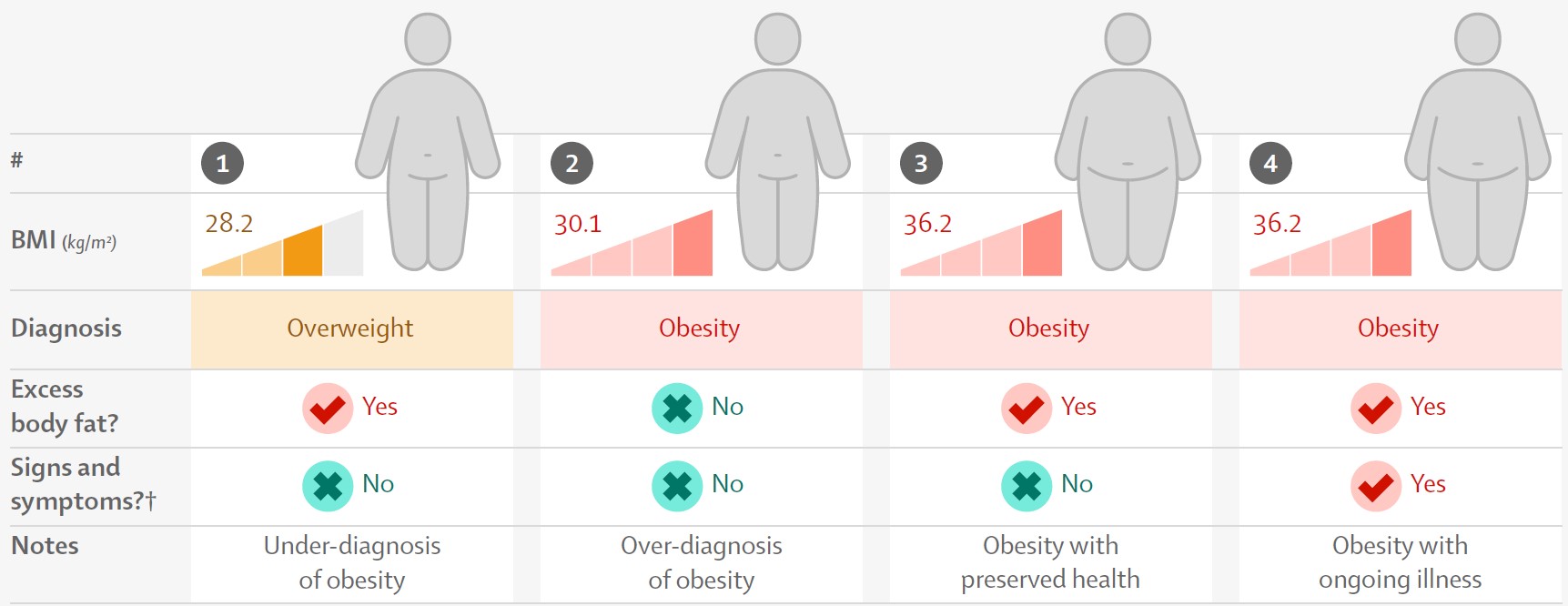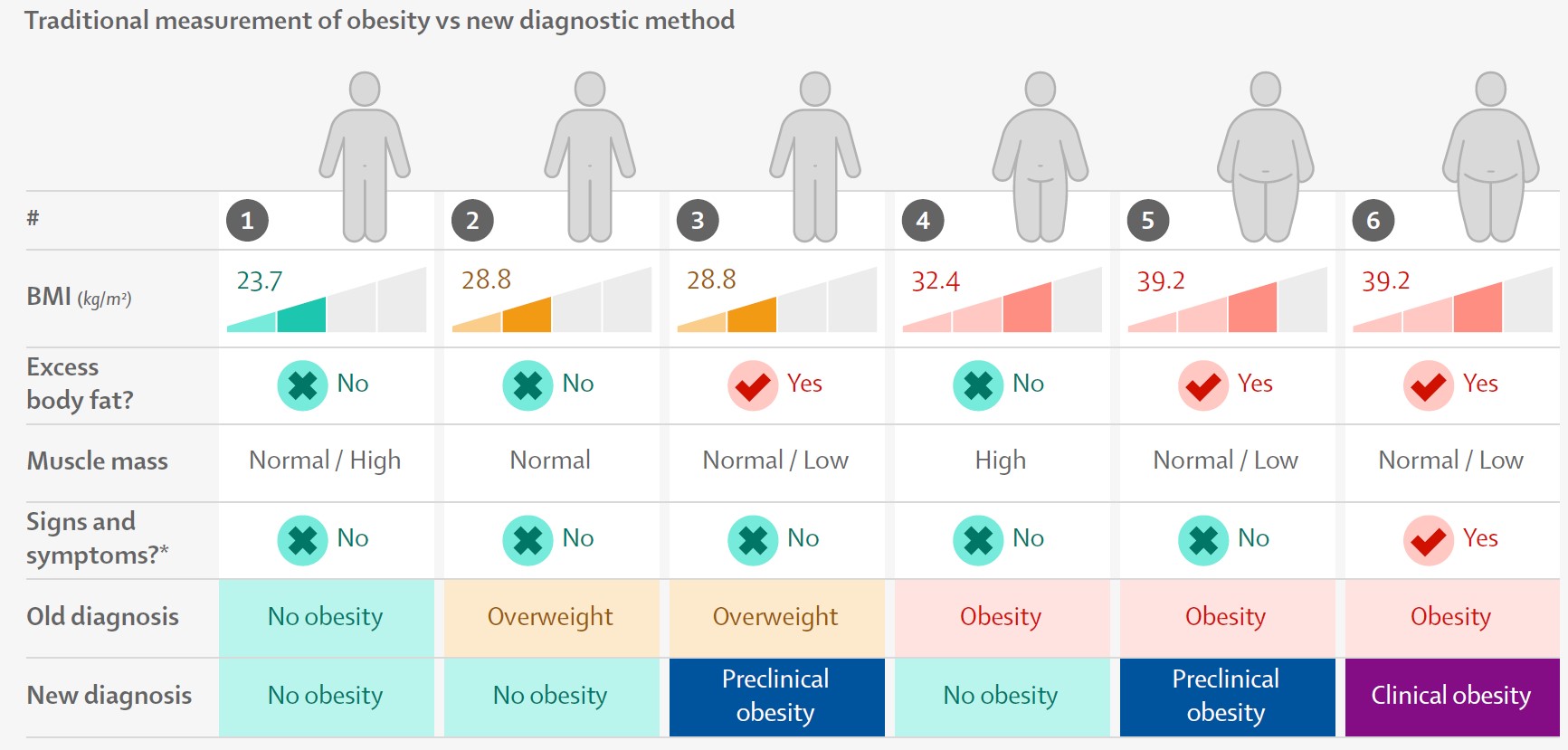Beyond BMI: A New Era of Weight Management

Earlier this year (2025), a report from The Lancet Diabetes & Endocrinology Commission called into question the most popular methods used for defining and managing obesity. This new comprehensive framework, supported by a global consensus of 75 professional organizations, calls for a move away from the long-standing reliance on Body Mass Index (BMI) towards a more sophisticated and scientifically sound approach that utilizes more advanced technology, or a mixture of various measurements and observations.
For decades, BMI has served as the primary tool for categorizing individuals as underweight, normal weight, overweight, or obese. However, the Commission's report compellingly argues that BMI's simplicity and usage of only weight relative to height is also its fundamental flaw.
The Pitfalls of a One-Dimensional Metric:
The Commission highlights several critical limitations of relying solely on BMI for obesity evaluation:
- The Hidden Risks of "Normal" Weight: Individuals can have a "normal" BMI yet still harbor unhealthy levels of excess body fat. This "metabolically obese" state often goes undetected by BMI alone, leaving individuals unaware of their increased risk for various health complications.
- The Mislabeling of the Muscular: Conversely, individuals with high muscle mass, such as athletes, often have higher BMIs despite having low levels of body fat. Categorizing these individuals as “obese” based on weight is not only inaccurate but can also lead to inappropriate medical advice.
- The Spectrum of Health Within "Obesity": The current BMI-based definition of obesity fails to distinguish between individuals with excess body fat who maintain healthy organ function and those who already exhibit signs of obesity-related illnesses. This lack of stratification hinders medical professional's ability to tailor interventions effectively, and diagnose disease accurately at an individual level.

Image Source: Definition and diagnostic criteria of clinical obesity (The Lancet Diabetes & Endocrinology Commission)
Introducing a More Granular Understanding: Clinical vs. Pre-Clinical Obesity
To address these shortcomings, the Commission proposes the introduction of the concepts of "clinical obesity" and "pre-clinical obesity."
- Clinical Obesity: This category refers to individuals whose excess body fat has already led to demonstrable organ dysfunction and the development of obesity-related health complications. Identifying clinical obesity is crucial for initiating timely and evidence-based medical interventions aimed at treating existing conditions and preventing further deterioration.
- Pre-Clinical Obesity: This category refers to individuals who possess excess body fat but do not have overt obesity-related health problems (yet). Recognizing pre-clinical obesity allows for targeted preventive strategies to reduce risk of developing complications in the future.

Image Source: Definition and diagnostic criteria of clinical obesity (The Lancet Diabetes & Endocrinology Commission)
This crucial distinction enables a more personalized approach to care, focusing on active treatment for those already suffering from the detrimental effects of excess fat, while prioritizing preventative measures for those who are at higher risk but not yet clinically ill.

Image Source: Definition and diagnostic criteria of clinical obesity (The Lancet Diabetes & Endocrinology Commission)
Personalized Care
The Commission's report is a compelling call for healthcare providers to embrace a more nuanced and individualized approach to patient care. Moving beyond BMI requires usage of more comprehensive assessment methods. This includes incorporating additional measurements such as waist circumference for estimation of visceral fat, and direct assessments of body fat using more advanced devices such as Charder Body Composition Analyzers utilizing BIA technology.
By integrating these additional tools, healthcare professionals can gain a more accurate understanding of an individual's true health status and tailor interventions accordingly, moving away from a singular, potentially stigmatizing label towards a more comprehensive understanding of each patient's health journey.
Conclusion
If widely adopted, the new approach recommended by The Lancet Diabetes & Endocrinology Commission would provide improved diagnosis and management of obesity compared to usage of BMI alone. For healthcare professionals, it's important to critically evaluate and integrate these advancements into practice!




